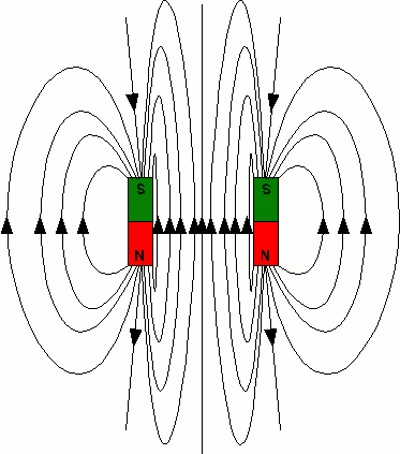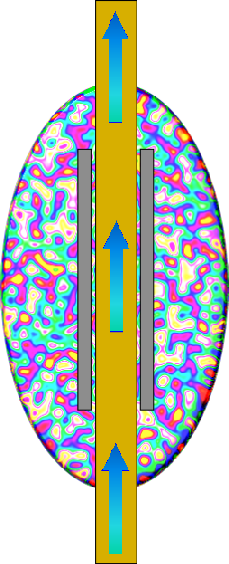LimeStop M
A feasibility study into a high-intensity magnetic field - to inhibit limescale
An evaluation is currently ongoing into the effectiveness of high-powered neodymium magnets on the production of limescale on heated surfaces. A trial was started on October 7th, 2022 of a high-intensity magnetic gauss field, and early conclusions (October 11th) seem to point at an ability to inhibit limescale formation. A formation of limescale has already taken place in just four days (as is normal for a hard water area). However, this limescale seems to flake off very easily. But these results are indeed early, and it remains to be seen if the high-intensity field can successfully inhibit limescale formation to a degree that would warrant the cost of the magnetic device (as the magnets are expensive). This will be updated as the trial progresses and comes to an eventual conclusion.
Two opposing rectangular neodymium magnets, each with a 12,000 gauss field, have been chosen - enveloping the water supply pipe at 180 degrees to each other. The water passes through this field (through a copper pipe). The magnetic field is not reflected (inhibited from escape) by ferrous-metal shields. A second trial will commence after the first using ferrous-metal shields to ascertain if this is more effective. The device is installed in a very hard water area, and will likely show results (positive or negative) early, though the trial is for a period of 30 days.
Wherever there is an electric field, there is a magnetic one. And the reverse is also true - wherever there is a magnetic field, there is an electric one - when the magnet or a wire is moving. 'Limescale inhibitors' which use electricity (the plugged-in type) create a magnetic field inside and around the coil of wire that is wrapped around the pipe. However, numerous examples of these NOT working have been seen by us over decades of experience. The magnetic field created doesn't appear to do anything. Either the field isn't strong enough, or the principle doesn't work.
So what if the opposite is applied - that of a magnetic field creating an electric current?
What we are trying to ascertain is if the magnetic field we have arranged - of opposing fields - creates a local electric current which affects limescale formation when the water supply passes through the middle of this field. In principle, it should not, as the magnet is static. However, the water is moving. It is believed that this movement creates a tiny electric current when passed through or close to a magnet. It is this principle that we are testing.
We have already marketed (in 2021) a similar inexpensive device utilising this principle (but with large ferrite magnets), and the reports of its effectiveness have been relayed to us. However, the device we propose would use neodymium magnets of high intensity and value (cost). Neodymium magnets are the strongest and most expensive. This will mean that any product we manufacture will be rather expensive, so we want to make sure it will actually work.
October 15th:
Eight days into the trial, and we are surprised to report that limescale build-up is slow (slower than it would otherwise be). It IS there, but flakes off fairly easily. We will continue to monitor this, and post reports here.
October 20th:
Limescale formation is increasing in severity. Some is becoming loose and cracking off, but a build-up is there.
October 25th:
Limescale continues to flake off, and reformation appears to be slow.
November 11th:
Formation continues to be slow, and flakes off. Because of this, we are continuing the period of the trial another month.
After two months of trial, it was found that limescale formation was inhibited and slower than 'normal'. However, there was no limescale inhibition that would justify the cost of a device using expensive neodymium magnets. It is therefore concluded that it is not viable.

